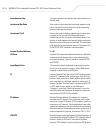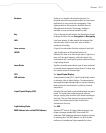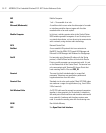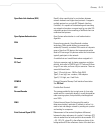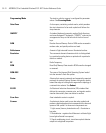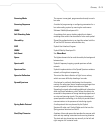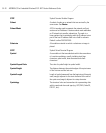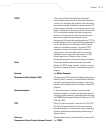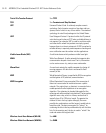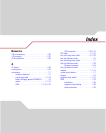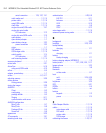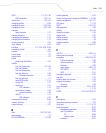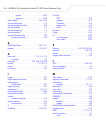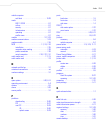
MC9000-K/S for Embedded Windows® CE .NET Product Reference Guide
GL-18
Trivial File Transfer Protocol See TFTP.
TSR See Terminate and Stay Resident.
UPC Universal Product Code. A relatively complex numeric
symbology. Each character consists of two bars and two
spaces, each of which is any of four widths. The standard
symbology for retail food packages in the United States.
UDP User Datagram Protocol. A protocol within the IP protocol
suite that is used in place of TCP when a reliable delivery is
not required. For example, UDP is used for real-time audio
and video traffic where lost packets are simply ignored,
because there is no time to retransmit. If UDP is used and a
reliable delivery is required, packet sequence checking and
error notification must be written into the applications.
Visible Laser Diode (VLD) A solid state device which produces visible laser light.
WAN Wide-Area Network. A radio network that supports data
communication beyond a local area. That is, information
can be sent across a city, state, or even nationwide.
Warm Boot A warm boot restarts the mobile computer by closing all
running programs. All data that is not saved to flash
memory is lost.
WEP Wired Equivalent Privacy, is specified by IEEE for encryption
and decryption of RF (wireless) communications.
WEP Encryption (Wired Equivalent Privacy encryption) The conversion of
data into a secret code for transmission over a public
network. The original text, or plaintext, is converted into a
coded equivalent called ciphertext via an encryption
algorithm. The ciphertext is decoded (decrypted) at the
receiving end and turned back into plaintext. The encryption
algorithm uses a key, which is a binary number that is
typically from 40 to 128 bits in length. The greater the
number of bits in the key (cipher strength), the more
possible key combinations and the longer it would take to
break the code. The data is encrypted, or “locked,” by
combining the bits in the key mathematically with the data
bits. At the receiving end, the key is used to “unlock” the
code and restore the original data.
Wireless Local Area Network (WLAN) See LAN.
Wireless Wide Area Network (WWAN) See WAN.



